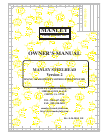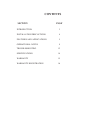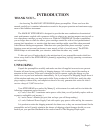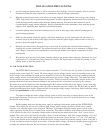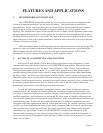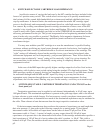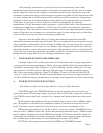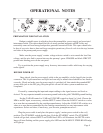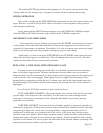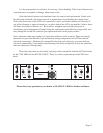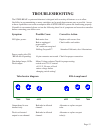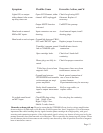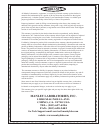Each cartridge manufacturer’s product will work best in a laboratory sense when
terminated (loaded) with a certain amount of resistance and capacitance. By lab sense it is meant
that the signal developed by the cartridge is at maximum power transfer into the pre-amp, with
minimum overshoot and ringing, flattest frequency response and gentle roll-off characteristics. But
it is those settings that create the most musically satisfying results for you that are of uppermost
importance. And your termination preferences may rightly deviate unpredictably from some lab-
based norm. A good place to start is with those values recommended by the cartridge
manufacturer, less the interconnect cable capacitance. A good default value, if the recommended
cartridge load capacitance is unknown, is 150 pF, the sum of cable and termination capacitance
switch settings. This value reflects a de facto standard as used by pre-amp manufacturers past and
present. From there we encourage you to scrutinize a range of switch settings until you find those
values which best suit you and your accompanying components.
Also notice that the audible affects of varying the termination capacitance can differ
substantially between cartridge types and brands. This is to be expected due to the greatly varying
source impedance characteristics of the cartridges available today. In general you may expect the
termination capacitance value to alter, at one extreme, subtle imaging and spatial cues, and at the
other high-frequency content, forwardness and speed of the reproduced sound. As with the load Z
switch, feel free to tune the termination capacitance switches for maximum sonic satisfaction even
though the final setting differs from the cartridge manufacturer’s specs.
5. SWITCH-SELECTABLE AMPLIFIER GAIN
Cartridge output levels and downstream line-level interconnect drive voltage requirements
can vary greatly between manufacturers. Hence a four-step amplifier-block gain control has been
included to accommodate these differences, as well as differing cartridge sensitivities. You may
select from 50 to 65 dB of gain in 5 dB steps. The gain figure is referred to amplifier gain at 1
kHz. Notice that the pre-amp gain is about 20 dB higher (10 times) at 20 Hz and about 20 dB
lower (0.1 times) at 20,000 Hz. The MC step-up autoformer may also provide approximately 2 to
12 dB of additional voltage gain depending on cartridge source impedance and load switch setting.
6. PUSH-BUTTON SWITCH FUNCTIONS
Four feature switches have been provided for a variety of utility functions.
STANDBY toggles the STEELHEAD between normal operating state and a near zero-
power sleep mode. No operating voltages are present when in sleep mode, except for some keep-
alive CMOS system control logic, energized by a separate small mains transformer in the power
supply.
SUM combines the amplified audio into a binaural signal, present at the VARIable outputs
only. Monophonic or the lateral-only modulation content of your stereo records may now be
heard. True mono may be experienced if the feed to one of your two loudspeakers is cut.
DIM reduces the output level by 20 dB, or about 1/4 previous volume. The DIM function is
effective at the VARIable outputs only. Notice that preamp specifications at the VARIable output
may be slightly compromised with the DIM feature engaged. This feature should be treated as a
convenience for use when, for example, cueing up a record. System-menacing pops and thumps
due to needle-drop are held at bay yet sound from the pick-up may still be heard.
MUTE kills audio signals present at both the FIXED and VARIABLE outputs.
Page 7



